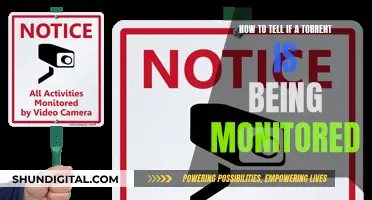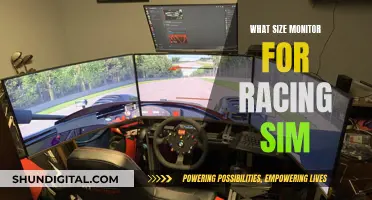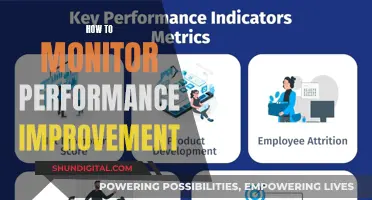
If you're a gamer, investing in a 120Hz monitor can be a great way to enhance your gaming experience. A monitor's refresh rate refers to the number of times per second that the image is updated, and a higher refresh rate means smoother visuals. While standard monitors typically have a refresh rate of 60Hz, gaming monitors often start from 120Hz or 144Hz. A 120Hz monitor can display twice as many images in a second as a 60Hz monitor, resulting in smoother motion and reduced screen tearing.
However, to take full advantage of a 120Hz monitor, you need a capable graphics card that can handle high frame rates. Additionally, a high refresh rate may not be as important if you play slower-paced games or don't play video games at all. In those cases, you might be better off investing in a larger or higher-resolution monitor instead. Ultimately, the decision to buy a 120Hz monitor depends on your specific needs and preferences.
| Characteristics | Values |
|---|---|
| Smoother visuals | 120Hz monitor updates the picture 120 times in a second |
| Faster refresh rate | 120Hz is suitable for casual gaming and enthusiasts |
| Resolution | 120Hz monitors are good for day-to-day work |
| Budget-friendly | 120Hz monitors are usually entry-level and budget options |
What You'll Learn
- Smoother visuals: 120Hz monitors deliver twice as many images per second as 60Hz monitors, resulting in smoother visuals
- Competitive gaming: 120Hz monitors are ideal for competitive gaming, providing an edge in fast-paced games
- Casual gaming: For casual gaming, a 120Hz monitor is sufficient and strikes a balance between performance and cost
- Budget-friendliness: 120Hz monitors are often more affordable than higher-end options, making them a budget-friendly choice
- Compatibility: 120Hz monitors are widely compatible with consoles like the PS5 and Xbox Series X, as well as PCs

Smoother visuals: 120Hz monitors deliver twice as many images per second as 60Hz monitors, resulting in smoother visuals
A 120Hz monitor can display twice as many images per second as a 60Hz monitor, resulting in smoother visuals. This is especially noticeable when it comes to graphically demanding tasks like fast-paced gaming or watching action movies.
For example, if you're playing a game that requires quick reactions, such as a first-person shooter, a higher refresh rate can be the difference between winning and losing. With a 120Hz monitor, you'll see visual information that you would have missed on a 60Hz display, making it easier to track fast-paced action. This advantage is why competitive gamers tend to opt for monitors with higher refresh rates.
It's also worth noting that a higher refresh rate can reduce input lag, which is the delay between you making an input (e.g. pressing a button) and the game registering that input. Again, the difference is tiny—in the order of milliseconds—but it can be a big deal in competitive gaming scenarios.
That said, if you're a casual gamer or don't play video games at all, a 120Hz monitor might not be worth the extra cost. There are few applications outside of gaming where higher refresh rates will make a noticeable difference. In that case, you may be better off investing in a display with a higher resolution or better image quality.
ASUS MB168B Monitor and ASRock Motherboard: A Perfect Match?
You may want to see also

Competitive gaming: 120Hz monitors are ideal for competitive gaming, providing an edge in fast-paced games
Competitive gaming is all about having the right equipment to give you an edge over your opponents. A 120Hz monitor is one such tool that can provide a significant advantage in fast-paced games.
A higher refresh rate means smoother visuals and more fluid motion, which is crucial for first-person shooters and other fast-paced genres. While a 60Hz monitor is the standard, a 120Hz monitor provides a noticeable improvement in smoothness, reducing motion blur and enhancing your overall gaming experience.
Additionally, a 120Hz monitor can offer a more responsive feel with lower input lag, ensuring your actions are translated accurately and swiftly on-screen. This is vital for competitive gaming, where every second counts and quick reactions are essential.
The benefits of a 120Hz monitor are especially evident when paired with a capable graphics card and CPU. While a 240Hz monitor may be overkill for some, a 120Hz monitor strikes a perfect balance, providing a significant upgrade over 60Hz without requiring excessive hardware specifications.
For console gamers, the latest generation of consoles, such as the PS5 and Xbox Series X|S, support 120Hz at 4K resolution, making a 120Hz monitor an ideal choice for maximising your gaming experience.
Furthermore, a 120Hz monitor can also improve your viewing experience when watching native 24 FPS content, such as Blu-ray movies. A 60Hz TV has to use a '3:2 pulldown' method, which can introduce slight judder, whereas a 120Hz TV uses a '5:5 pulldown', resulting in a smoother viewing experience.
In conclusion, if you're a competitive gamer seeking an edge in fast-paced games, a 120Hz monitor is an excellent investment. It provides smoother visuals, lower input lag, and a more responsive feel, ensuring you stay ahead of the competition.
Zooming on an ASUS VivoBook Max Monitor: Easy Guide
You may want to see also

Casual gaming: For casual gaming, a 120Hz monitor is sufficient and strikes a balance between performance and cost
For casual gaming, a 120Hz monitor is a great choice, offering a balance of performance and cost. While higher refresh rates are available, 120Hz is the maximum supported by the PS5 and Xbox Series X|S, so it's a good option for console gamers.
A 120Hz monitor will provide a noticeable improvement over a 60Hz display, with smoother motion and a more pleasant overall experience. This higher refresh rate will enhance not only games but also general desktop use.
When choosing a 120Hz monitor, look for one with a fast response time to ensure crisp motion, and low input lag for a responsive feel. A display with good HDR picture quality will also enhance your gaming experience, offering vibrant and lifelike colours, high contrast, and great brightness.
Additionally, consider the resolution you require. A 4k resolution monitor can take full advantage of gaming consoles for 4k gaming at 120Hz, but a lower-resolution display may be a more cost-effective option.
Some recommended 120Hz monitors include the Dell G2724D, a simple and affordable option, and the Acer Nitro XV275K P3biipruzx, which offers good picture quality and HDMI 2.1 bandwidth to support gaming consoles.
Overall, a 120Hz monitor is a great choice for casual gaming, providing a noticeable upgrade over a standard 60Hz display without breaking the bank.
How Dual Monitors Affect Disk Usage Performance
You may want to see also

Budget-friendliness: 120Hz monitors are often more affordable than higher-end options, making them a budget-friendly choice
If you're looking for a new monitor, you might be wondering whether a 120Hz monitor is worth the investment. While 120Hz monitors are ideal for gamers, they can also be a great budget-friendly option for casual users.
First, let's understand what a 120Hz monitor is and why it matters. The refresh rate of a monitor refers to the number of times per second that the image is updated, and this is measured in hertz (Hz). A higher refresh rate means smoother visuals, which is especially important for fast-paced gaming or watching action movies. A 120Hz monitor will update the picture 120 times per second, offering twice as many images as a standard 60Hz monitor.
For casual gaming and day-to-day work, a 120Hz monitor is more than sufficient. In fact, 120Hz monitors are often entry-level and budget-friendly options. If you're browsing for a gaming monitor, you'll find many more affordable 120Hz options than 60Hz ones.
While a higher refresh rate is beneficial for gaming, it's not as crucial for other tasks. Movies are typically shown at 24 frames per second (FPS), and even basic 60Hz monitors can handle this without issue. Productivity apps and video playback utilities also won't be affected by an ultra-high refresh rate.
So, if you're a casual gamer or don't play video games at all, a 120Hz monitor can be a great budget-friendly choice. Instead of spending a lot of money on a higher-end monitor, you can opt for a 120Hz monitor and still enjoy smooth visuals. This is especially true if you're pairing it with a mid-range graphics card, as a higher-end monitor won't make a difference if your graphics card can't keep up.
Additionally, with a 120Hz monitor, you can allocate your budget to other features that may be more important to you. For example, you could choose a larger monitor, a higher resolution, or a monitor with better image quality or additional features.
In conclusion, 120Hz monitors offer a great balance of performance and affordability. They are ideal for casual gamers and users who don't require extremely high refresh rates for their tasks. By choosing a 120Hz monitor, you can get a smooth and responsive experience without breaking the bank.
Is Your Monitor Clamp-Compatible?
You may want to see also

Compatibility: 120Hz monitors are widely compatible with consoles like the PS5 and Xbox Series X, as well as PCs
120Hz monitors are widely compatible with next-gen consoles like the PS5 and Xbox Series X/S, as well as PCs. This compatibility makes them a great choice for gamers who want to enjoy their games on both their PC and their console without sacrificing performance.
The PS5 and Xbox Series X/S are capable of outputting 4K resolution at 120Hz, making these monitors a great choice for those who want to take full advantage of the power of the latest consoles. Additionally, many gaming PCs are also capable of outputting at 120Hz, making these monitors a versatile option for those with a high-end gaming setup.
The higher refresh rate of 120Hz monitors provides a smoother and more responsive gaming experience compared to standard 60Hz monitors. This is especially beneficial for fast-paced and competitive games, as it can give players an edge over their opponents. The smoother motion and lower input lag can improve aim and make it easier to track fast-paced action.
It's worth noting that to take full advantage of a 120Hz monitor, you will need a graphics card that can handle high frame rates. A powerful graphics card will ensure that you can make the most of the monitor's capabilities and achieve the desired performance.
Overall, 120Hz monitors offer a great balance of performance and compatibility, making them a popular choice for gamers who want a versatile display for their console and PC gaming needs.
Ensuring Your Monitor is Level: Quick and Easy Methods
You may want to see also
Frequently asked questions
A 120Hz monitor is good for gaming and watching native 24FPS content. A higher refresh rate means you will see smoother visuals and have a more immersive experience.
Yes, a 120Hz monitor is good for casual gaming. For serious or professional gamers, a higher refresh rate monitor (240Hz or more) is recommended.
Yes, to unleash the full potential of a 120Hz monitor, you will need a capable graphics card and CPU.
Yes, if you are looking for a high refresh rate monitor, you can also consider a 144Hz or 240Hz monitor. These monitors offer even smoother visuals and are better suited for competitive gaming.
The cost of a 120Hz monitor can vary depending on the brand, features, and specifications. Some 120Hz monitors can be found in the budget-friendly range, while others can be more expensive.







